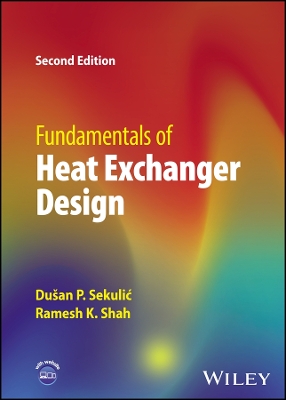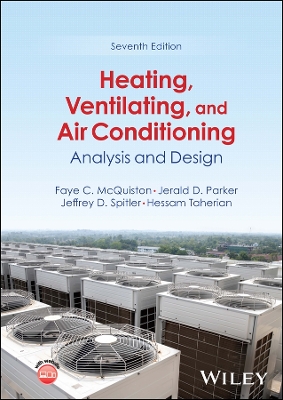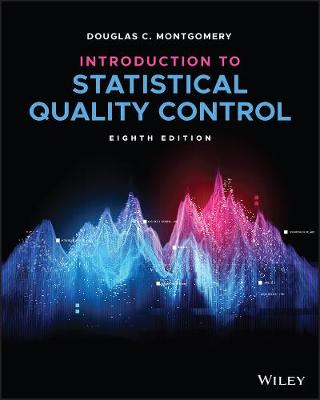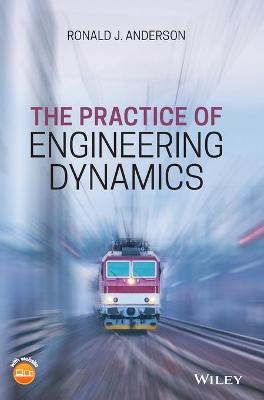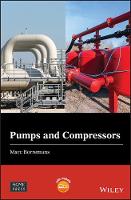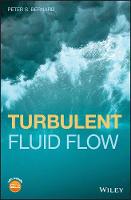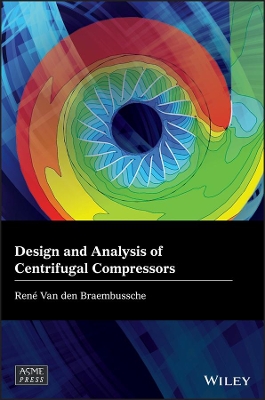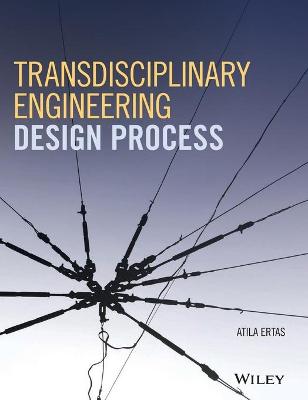Multiphase Transport of Hydrocarbons in Pipes
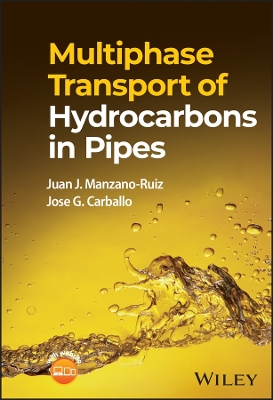 -10%
portes grátis
-10%
portes grátis
Multiphase Transport of Hydrocarbons in Pipes
Carballo, Jose G.; Manzano-Ruiz, Juan J.
John Wiley & Sons Inc
03/2024
352
Dura
Inglês
9781119888512
15 a 20 dias
About the Authors xvii
Acknowledgments xix
Nomenclature xxi
About the Companion Website xxix
1 Introduction 1
1.1 What Is Multiphase Flow 1
1.2 Single- and Multicomponent Fluids 3
1.3 Challenges to Model Multiphase Flow 4
1.3.1 Experiments and Scale-up 4
1.3.2 Multidimensional Fluid Flows 5
1.3.3 Time Fluctuations 6
1.3.4 Slow Transients 6
1.3.5 Compositional Simulation 7
1.4 Hydrocarbon Flow 7
1.5 Modeling Approaches 8
References 9
2 Fundamentals of Multiphase Flow 11
2.1 Multiphase Flow in the Production of Oil and Gas 11
2.2 Multiphase Flow Concepts 15
2.2.1 Void Fraction and Hold-up 15
2.2.2 Phase Velocity, Slip Factor, and Volumetric Flow 16
2.2.3 Volumetric Flux and Superficial Velocities 17
2.2.4 Density 18
2.2.5 Mass Flows 18
2.2.6 Mass Velocity 19
2.2.7 Mass Quality and Volumetric Quality 19
2.2.8 Drift Velocities and Drift Fluxes 19
2.3 Modeling Strategy 20
2.3.1 Area Averaging and One-dimensional Flow 20
2.3.2 Pseudo-steady Flow 20
2.3.3 Time Averaging of Turbulent Fluctuations 21
2.3.4 Mechanistic Approach 21
2.3.5 Boundary and Initial Conditions 21
2.3.6 Boundary-value and Marching-scheme Strategies 22
2.3.7 Closure Equations 23
2.4 Two-Phase Flow Measurements 23
2.4.1 Well Testing and Production Allocation 23
2.4.2 Multiphase Flow Meter (MPFM) and Field Application 24
2.4.3 Density Meters 27
2.4.4 Void Fraction Meters 28
2.4.5 Momentum Flux Meters 28
2.4.6 Flow Pattern Identification 28
2.4.7 Uncertainty in Multiphase Flow Measurement 29
2.5 Future Measuring Trends 30
References 31
3 Hydrocarbon Fluid Properties and Thermodynamics 33
3.1 Phase Behavior 33
3.1.1 Empirical Data 33
3.1.2 Pure Compound Phase Behavior 35
3.1.3 Binary Systems 36
3.1.4 Multicomponent Fluid Phase Behavior 36
3.2 Physical Properties 39
3.2.1 Gas Compressibility Factor 39
3.2.2 Gas and Oil Density 41
3.2.3 Gas, Oil, and Water Viscosity 43
3.2.4 Solution Gas Ratio (R s) 44
3.2.5 Bubble Point 45
3.2.6 Oil Formation Volume Factor (B o) 46
3.2.7 Gas Formation Volume Factor (B g) 47
3.3 Equation of State (EOS) 47
3.3.1 Ideal Gas 48
3.3.2 Van der Waals 49
3.3.3 Benedict-Webb-Rubin 49
3.3.4 Redlich-Kwong 50
3.3.5 Peng-Robinson 50
3.3.6 Other Equations of State 51
3.3.7 Equilibrium and Fugacity Coefficient 51
3.3.8 Mixing Rules 52
3.4 C7+ characterization 53
3.5 Thermal and Transport Properties 54
3.5.1 Enthalpy 54
3.5.2 Heat Capacity 55
3.5.3 Joule-Thomson Coefficient 56
3.5.4 Speed of Sound 56
3.5.5 Thermal Conductivity 57
3.5.6 Surface Tension 57
3.6 Types of Hydrocarbon Fluids 57
3.6.1 Black Oils 57
3.6.2 Volatile Oils 58
3.6.3 Retrograde Gas Condensate 59
3.6.4 Wet Gas 59
3.6.5 Dry Gas 61
3.7 PVT Analyses 61
3.7.1 Constant Composition Expansion (CCE) 62
3.7.2 Constant Volume Depletion (CVD) 62
3.7.3 Differential Liberation (DL) 63
3.7.4 Separator Test 64
3.7.5 Viscosities 64
3.8 Strategy for Modeling Fluid Properties 65
3.8.1 Compositional versus Tabular 65
3.8.2 EOS or Black Oil Models 66
3.8.3 Blending of Different Streams 66
3.9 Commercial Software 67
References 67
4 Multiphase Flow Patterns 69
4.1 Gas-Liquid Flow 69
4.2 Dispersed versus Separated Flow Regimes 70
4.3 Vertical and Inclined Flow Maps 71
4.4 Quasi-Horizontal Flow Maps 72
4.5 Liquid-Liquid Flow Map 77
4.6 Three-Phase Flow 78
4.7 Liquid-Solid Flow 79
4.8 Gas-Solid Flow 81
4.9 Conclusions 82
References 82
5 Two-Phase Flow in Pipelines 85
5.1 Introduction 85
5.2 Conservation Principles 85
5.2.1 Local Instantaneous Equations 86
5.3 Space-Averaged Equations 89
5.4 Time-Averaged Equations 91
5.5 Composite-Averaged Equations 92
5.6 Two-Fluid Model (TFM) 93
5.6.1 OLGA (R) Software (SLB) 94
5.7 Constitutive Equations 96
5.8 One-Dimensional Modeling 97
5.9 Homogeneous Equilibrium Model (HEM) 98
5.10 Separated Flow Model 99
5.11 Kinematic Models 101
5.11.1 Bankoff Model (1960) 101
5.11.2 Zuber-Findlay Model (1965) 102
5.11.3 Drift-Flux Model (DFM) 103
5.12 Mechanistic/Phenomenological Models 105
5.13 Empirical Models 107
5.13.1 Flanigan Model (1958) 107
5.13.2 Beggs and Brill Model (1973) 108
5.13.3 Void Fraction Empirical Models 111
5.14 Computational Fluid Dynamics (CFD) 111
References 112
6 Two-Phase Flow in Wells 117
6.1 Introduction 117
6.2 Reservoir Boundary Conditions 118
6.2.1 Well Production String: Vertical, Inclined, and Horizontal Wells 118
6.3 Nodal TM Analysis 120
6.4 Wells Cluster and Manifolds 121
6.5 Water and Gas Coning 124
6.6 Legacy Models 125
6.6.1 Poettmann-Carpenter Model (1952) 126
6.6.2 Griffith-Wallis Model (1961) 126
6.6.3 Duns-Ros Model (1963) 129
6.6.4 Hagedorn-Brown Model (1965) 133
6.6.5 Orkiszeski Model (1967) 136
6.6.6 Beggs-Brill Model (1973) 137
6.6.7 Gray Model (1978) 137
6.6.8 Mukherjee and Brill Model (1985) 138
6.7 Mechanistic Models for Well Flow 141
6.7.1 Ansari et al. Model (1994) 141
6.7.2 Unified Mechanistic Models 144
6.7.3 Hasan and Kabir Model (2002) 144
6.8 Comparison of Flow Models 147
6.9 Severe Slugging Phenomenon 148
6.10 Gas Lift 151
References 151
7 Two-Phase Flow Through Restrictions and Piping Components 155
7.1 Introduction 155
7.2 Flow Through Restrictions 155
7.3 Critical Flow 156
7.4 Choke Valves 159
7.5 Sudden Pipe Enlargement 164
7.6 Sudden Pipe Contraction 165
7.7 Flow Orifice 166
7.8 Gate and Globe Valves 167
7.9 Elbows and Bends 168
7.10 Tee Junctions and Manifolds 168
References 171
8 Two-Phase Flow Thermal Modelling 173
8.1 Introduction 173
8.2 Normal and Transient Operation 174
8.3 Offshore and Onshore Pipelines 174
8.4 Heat Transfer Mechanisms 175
8.5 Internal Heat Transfer Coefficients 176
8.5.1 Turbulent Flow Forced-convection Inside Tubes 176
8.5.2 Laminar Flow Forced convection Inside Tubes 177
8.5.3 Two-phase Disperse bubble Flow in Horizontal Pipe 177
8.5.4 Two-phase Stratified Flow in Horizontal Pipe 178
8.5.5 Two-phase Slug flow in Horizontal Pipe 178
8.5.6 Natural Convection in a Stagnant Fluid Within a Horizontal Pipe 179
8.5.7 Forced Convection in Vertical Two-phase Flow 180
8.6 External Heat Transfer Coefficient 180
8.7 Thermal Insulation 181
8.8 Overall Heat Transfer Coefficient (OHTC) 183
8.9 Buried Pipelines 187
8.10 Temperature Profile 189
8.11 Flowline Cooldown 193
8.12 Document Navigation Heat Transfer in the Wellbore 194
References 197
9 Advanced Simulations 199
9.1 Introduction 199
9.2 Nature of Transient Flow 200
9.3 Transient Flow Applications 202
9.4 Transient Modeling Challenges 204
9.5 Current Weaknesses of Simulating Two-Phase Flow in Pipelines 205
9.6 Future of Two-Phase Flow Simulations 207
9.7 Simulation Philosophies 214
References 214
10 Multiphase Flow Simulations 217
10.1 Introduction: Simulation Challenges 217
10.1.1 Mathematical Models for Two-Phase Flow Simulation 217
10.1.2 Challenges in Two-Phase Flow Simulation 218
10.1.3 Results Validation 218
10.2 Multiphase Flow Simulation Considerations 220
10.2.1 Integration Time Step 220
10.2.2 CFL Condition 221
10.2.3 Round-off Error 221
10.2.4 Geometry Representation 222
10.2.5 Cell-Size Ratio - the Ratio of "2" 222
10.2.6 Dispersion Effects 223
10.2.7 Constant Composition Versus Compositional Simulation 223
10.2.8 Initial Conditions 224
10.2.9 Deepwater Settings 224
10.3 Multiphase Flow Applications 225
10.4 Production Wells Simulation 225
10.4.1 Onshore Well Operating in Steady State 227
10.4.2 Onshore Well Initial Start-up Example 229
10.4.3 Onshore Well Shutdown Example 235
10.5 Offshore Flowlines 236
10.5.1 Offshore Flowline Simulations in Steady State 238
10.5.2 Oil Flowline System in a Steady-State Example 239
10.5.3 Offshore Flowline Transient Simulations 242
10.5.4 Slugging Example 244
10.5.5 Hydrodynamic Slugging Example 244
10.5.6 Severe Slugging Example 245
10.5.7 Ramp-up and Ramp-down Operations 247
10.5.8 Offshore Flowline Ramp-down and Ramp-up Example 248
10.5.9 Cooldown Transient 249
10.5.10 Offshore Flowline Cooldown Example 249
10.5.11 Depressurization Operation 249
10.5.12 Offshore Flowline Depressurization Example 251
10.5.13 Blowdown (Flowline Rupture) Transient 254
10.5.14 Offshore Flowline Rupture Blowdown Example 256
10.5.15 Shutdown Operation 257
10.5.16 Offshore Flowline Planned Shutdown Example 258
10.5.17 Offshore Flowline Restart After Planned Shutdown Example 261
10.5.18 Unplanned Shutdown and Dead Oil Circulation in Flowline Loop 261
10.5.19 Offshore Flowline Loop with Hot Oil Circulation Example 264
10.5.20 Pigging Example 265
10.6 Summary 270
References 271
11 Fluid-Solid Transport 273
11.1 Characteristics of Solid-Fluid Flow 274
11.2 Fundamental Equations 276
11.2.1 Mixture Density 276
11.2.2 Fluid Phase Mass Conservation 276
11.2.3 Solid-Phase Mass Conservation 276
11.2.4 Solid-Fluid Mixture Mass Conservation 277
11.2.5 Mixture Momentum Equation 277
11.2.6 Dilute Suspensions in Turbulent Flow 277
11.3 Simplified Horizontal Flow Models 277
11.3.1 Homogeneous Flow Model 278
11.3.2 Heterogeneous Flow Model 279
11.4 Minimum Deposit Velocity 282
11.5 Sand Production 283
11.6 Sand Distribution 284
11.7 Pipe Erosion and Erosional Velocity 285
11.8 Application Examples 286
References 287
A Multiphase Flow Software Tools 289
A.1 Thermodynamics and Transport Properties Simulators 289
A.1 Pvtsim Nova (R) 290
A.1.2 Multiflash (R) 291
A.1.3 Aspen Hysys (R) 291
A.1.4 Refprop (R) 292
A.1.5 Pvtp (R) 293
A.1.6 Dwsim (R) 293
A.2 Steady-State Multiphase Simulators 294
A.2.1 Pipesim (R) 294
A.2.2 Gap (R) and Prosper (R) 295
A.2.3 Olga-S (R) (SLB) 296
A.2.4 Pipephase (R) 297
A.3 Transient Multiphase Simulators 297
A.3.1 Olga (R) 297
A.3.2 LedaFlow (R) 299
A.3.4 Gap Transient 300
Index 301
About the Authors xvii
Acknowledgments xix
Nomenclature xxi
About the Companion Website xxix
1 Introduction 1
1.1 What Is Multiphase Flow 1
1.2 Single- and Multicomponent Fluids 3
1.3 Challenges to Model Multiphase Flow 4
1.3.1 Experiments and Scale-up 4
1.3.2 Multidimensional Fluid Flows 5
1.3.3 Time Fluctuations 6
1.3.4 Slow Transients 6
1.3.5 Compositional Simulation 7
1.4 Hydrocarbon Flow 7
1.5 Modeling Approaches 8
References 9
2 Fundamentals of Multiphase Flow 11
2.1 Multiphase Flow in the Production of Oil and Gas 11
2.2 Multiphase Flow Concepts 15
2.2.1 Void Fraction and Hold-up 15
2.2.2 Phase Velocity, Slip Factor, and Volumetric Flow 16
2.2.3 Volumetric Flux and Superficial Velocities 17
2.2.4 Density 18
2.2.5 Mass Flows 18
2.2.6 Mass Velocity 19
2.2.7 Mass Quality and Volumetric Quality 19
2.2.8 Drift Velocities and Drift Fluxes 19
2.3 Modeling Strategy 20
2.3.1 Area Averaging and One-dimensional Flow 20
2.3.2 Pseudo-steady Flow 20
2.3.3 Time Averaging of Turbulent Fluctuations 21
2.3.4 Mechanistic Approach 21
2.3.5 Boundary and Initial Conditions 21
2.3.6 Boundary-value and Marching-scheme Strategies 22
2.3.7 Closure Equations 23
2.4 Two-Phase Flow Measurements 23
2.4.1 Well Testing and Production Allocation 23
2.4.2 Multiphase Flow Meter (MPFM) and Field Application 24
2.4.3 Density Meters 27
2.4.4 Void Fraction Meters 28
2.4.5 Momentum Flux Meters 28
2.4.6 Flow Pattern Identification 28
2.4.7 Uncertainty in Multiphase Flow Measurement 29
2.5 Future Measuring Trends 30
References 31
3 Hydrocarbon Fluid Properties and Thermodynamics 33
3.1 Phase Behavior 33
3.1.1 Empirical Data 33
3.1.2 Pure Compound Phase Behavior 35
3.1.3 Binary Systems 36
3.1.4 Multicomponent Fluid Phase Behavior 36
3.2 Physical Properties 39
3.2.1 Gas Compressibility Factor 39
3.2.2 Gas and Oil Density 41
3.2.3 Gas, Oil, and Water Viscosity 43
3.2.4 Solution Gas Ratio (R s) 44
3.2.5 Bubble Point 45
3.2.6 Oil Formation Volume Factor (B o) 46
3.2.7 Gas Formation Volume Factor (B g) 47
3.3 Equation of State (EOS) 47
3.3.1 Ideal Gas 48
3.3.2 Van der Waals 49
3.3.3 Benedict-Webb-Rubin 49
3.3.4 Redlich-Kwong 50
3.3.5 Peng-Robinson 50
3.3.6 Other Equations of State 51
3.3.7 Equilibrium and Fugacity Coefficient 51
3.3.8 Mixing Rules 52
3.4 C7+ characterization 53
3.5 Thermal and Transport Properties 54
3.5.1 Enthalpy 54
3.5.2 Heat Capacity 55
3.5.3 Joule-Thomson Coefficient 56
3.5.4 Speed of Sound 56
3.5.5 Thermal Conductivity 57
3.5.6 Surface Tension 57
3.6 Types of Hydrocarbon Fluids 57
3.6.1 Black Oils 57
3.6.2 Volatile Oils 58
3.6.3 Retrograde Gas Condensate 59
3.6.4 Wet Gas 59
3.6.5 Dry Gas 61
3.7 PVT Analyses 61
3.7.1 Constant Composition Expansion (CCE) 62
3.7.2 Constant Volume Depletion (CVD) 62
3.7.3 Differential Liberation (DL) 63
3.7.4 Separator Test 64
3.7.5 Viscosities 64
3.8 Strategy for Modeling Fluid Properties 65
3.8.1 Compositional versus Tabular 65
3.8.2 EOS or Black Oil Models 66
3.8.3 Blending of Different Streams 66
3.9 Commercial Software 67
References 67
4 Multiphase Flow Patterns 69
4.1 Gas-Liquid Flow 69
4.2 Dispersed versus Separated Flow Regimes 70
4.3 Vertical and Inclined Flow Maps 71
4.4 Quasi-Horizontal Flow Maps 72
4.5 Liquid-Liquid Flow Map 77
4.6 Three-Phase Flow 78
4.7 Liquid-Solid Flow 79
4.8 Gas-Solid Flow 81
4.9 Conclusions 82
References 82
5 Two-Phase Flow in Pipelines 85
5.1 Introduction 85
5.2 Conservation Principles 85
5.2.1 Local Instantaneous Equations 86
5.3 Space-Averaged Equations 89
5.4 Time-Averaged Equations 91
5.5 Composite-Averaged Equations 92
5.6 Two-Fluid Model (TFM) 93
5.6.1 OLGA (R) Software (SLB) 94
5.7 Constitutive Equations 96
5.8 One-Dimensional Modeling 97
5.9 Homogeneous Equilibrium Model (HEM) 98
5.10 Separated Flow Model 99
5.11 Kinematic Models 101
5.11.1 Bankoff Model (1960) 101
5.11.2 Zuber-Findlay Model (1965) 102
5.11.3 Drift-Flux Model (DFM) 103
5.12 Mechanistic/Phenomenological Models 105
5.13 Empirical Models 107
5.13.1 Flanigan Model (1958) 107
5.13.2 Beggs and Brill Model (1973) 108
5.13.3 Void Fraction Empirical Models 111
5.14 Computational Fluid Dynamics (CFD) 111
References 112
6 Two-Phase Flow in Wells 117
6.1 Introduction 117
6.2 Reservoir Boundary Conditions 118
6.2.1 Well Production String: Vertical, Inclined, and Horizontal Wells 118
6.3 Nodal TM Analysis 120
6.4 Wells Cluster and Manifolds 121
6.5 Water and Gas Coning 124
6.6 Legacy Models 125
6.6.1 Poettmann-Carpenter Model (1952) 126
6.6.2 Griffith-Wallis Model (1961) 126
6.6.3 Duns-Ros Model (1963) 129
6.6.4 Hagedorn-Brown Model (1965) 133
6.6.5 Orkiszeski Model (1967) 136
6.6.6 Beggs-Brill Model (1973) 137
6.6.7 Gray Model (1978) 137
6.6.8 Mukherjee and Brill Model (1985) 138
6.7 Mechanistic Models for Well Flow 141
6.7.1 Ansari et al. Model (1994) 141
6.7.2 Unified Mechanistic Models 144
6.7.3 Hasan and Kabir Model (2002) 144
6.8 Comparison of Flow Models 147
6.9 Severe Slugging Phenomenon 148
6.10 Gas Lift 151
References 151
7 Two-Phase Flow Through Restrictions and Piping Components 155
7.1 Introduction 155
7.2 Flow Through Restrictions 155
7.3 Critical Flow 156
7.4 Choke Valves 159
7.5 Sudden Pipe Enlargement 164
7.6 Sudden Pipe Contraction 165
7.7 Flow Orifice 166
7.8 Gate and Globe Valves 167
7.9 Elbows and Bends 168
7.10 Tee Junctions and Manifolds 168
References 171
8 Two-Phase Flow Thermal Modelling 173
8.1 Introduction 173
8.2 Normal and Transient Operation 174
8.3 Offshore and Onshore Pipelines 174
8.4 Heat Transfer Mechanisms 175
8.5 Internal Heat Transfer Coefficients 176
8.5.1 Turbulent Flow Forced-convection Inside Tubes 176
8.5.2 Laminar Flow Forced convection Inside Tubes 177
8.5.3 Two-phase Disperse bubble Flow in Horizontal Pipe 177
8.5.4 Two-phase Stratified Flow in Horizontal Pipe 178
8.5.5 Two-phase Slug flow in Horizontal Pipe 178
8.5.6 Natural Convection in a Stagnant Fluid Within a Horizontal Pipe 179
8.5.7 Forced Convection in Vertical Two-phase Flow 180
8.6 External Heat Transfer Coefficient 180
8.7 Thermal Insulation 181
8.8 Overall Heat Transfer Coefficient (OHTC) 183
8.9 Buried Pipelines 187
8.10 Temperature Profile 189
8.11 Flowline Cooldown 193
8.12 Document Navigation Heat Transfer in the Wellbore 194
References 197
9 Advanced Simulations 199
9.1 Introduction 199
9.2 Nature of Transient Flow 200
9.3 Transient Flow Applications 202
9.4 Transient Modeling Challenges 204
9.5 Current Weaknesses of Simulating Two-Phase Flow in Pipelines 205
9.6 Future of Two-Phase Flow Simulations 207
9.7 Simulation Philosophies 214
References 214
10 Multiphase Flow Simulations 217
10.1 Introduction: Simulation Challenges 217
10.1.1 Mathematical Models for Two-Phase Flow Simulation 217
10.1.2 Challenges in Two-Phase Flow Simulation 218
10.1.3 Results Validation 218
10.2 Multiphase Flow Simulation Considerations 220
10.2.1 Integration Time Step 220
10.2.2 CFL Condition 221
10.2.3 Round-off Error 221
10.2.4 Geometry Representation 222
10.2.5 Cell-Size Ratio - the Ratio of "2" 222
10.2.6 Dispersion Effects 223
10.2.7 Constant Composition Versus Compositional Simulation 223
10.2.8 Initial Conditions 224
10.2.9 Deepwater Settings 224
10.3 Multiphase Flow Applications 225
10.4 Production Wells Simulation 225
10.4.1 Onshore Well Operating in Steady State 227
10.4.2 Onshore Well Initial Start-up Example 229
10.4.3 Onshore Well Shutdown Example 235
10.5 Offshore Flowlines 236
10.5.1 Offshore Flowline Simulations in Steady State 238
10.5.2 Oil Flowline System in a Steady-State Example 239
10.5.3 Offshore Flowline Transient Simulations 242
10.5.4 Slugging Example 244
10.5.5 Hydrodynamic Slugging Example 244
10.5.6 Severe Slugging Example 245
10.5.7 Ramp-up and Ramp-down Operations 247
10.5.8 Offshore Flowline Ramp-down and Ramp-up Example 248
10.5.9 Cooldown Transient 249
10.5.10 Offshore Flowline Cooldown Example 249
10.5.11 Depressurization Operation 249
10.5.12 Offshore Flowline Depressurization Example 251
10.5.13 Blowdown (Flowline Rupture) Transient 254
10.5.14 Offshore Flowline Rupture Blowdown Example 256
10.5.15 Shutdown Operation 257
10.5.16 Offshore Flowline Planned Shutdown Example 258
10.5.17 Offshore Flowline Restart After Planned Shutdown Example 261
10.5.18 Unplanned Shutdown and Dead Oil Circulation in Flowline Loop 261
10.5.19 Offshore Flowline Loop with Hot Oil Circulation Example 264
10.5.20 Pigging Example 265
10.6 Summary 270
References 271
11 Fluid-Solid Transport 273
11.1 Characteristics of Solid-Fluid Flow 274
11.2 Fundamental Equations 276
11.2.1 Mixture Density 276
11.2.2 Fluid Phase Mass Conservation 276
11.2.3 Solid-Phase Mass Conservation 276
11.2.4 Solid-Fluid Mixture Mass Conservation 277
11.2.5 Mixture Momentum Equation 277
11.2.6 Dilute Suspensions in Turbulent Flow 277
11.3 Simplified Horizontal Flow Models 277
11.3.1 Homogeneous Flow Model 278
11.3.2 Heterogeneous Flow Model 279
11.4 Minimum Deposit Velocity 282
11.5 Sand Production 283
11.6 Sand Distribution 284
11.7 Pipe Erosion and Erosional Velocity 285
11.8 Application Examples 286
References 287
A Multiphase Flow Software Tools 289
A.1 Thermodynamics and Transport Properties Simulators 289
A.1 Pvtsim Nova (R) 290
A.1.2 Multiflash (R) 291
A.1.3 Aspen Hysys (R) 291
A.1.4 Refprop (R) 292
A.1.5 Pvtp (R) 293
A.1.6 Dwsim (R) 293
A.2 Steady-State Multiphase Simulators 294
A.2.1 Pipesim (R) 294
A.2.2 Gap (R) and Prosper (R) 295
A.2.3 Olga-S (R) (SLB) 296
A.2.4 Pipephase (R) 297
A.3 Transient Multiphase Simulators 297
A.3.1 Olga (R) 297
A.3.2 LedaFlow (R) 299
A.3.4 Gap Transient 300
Index 301


